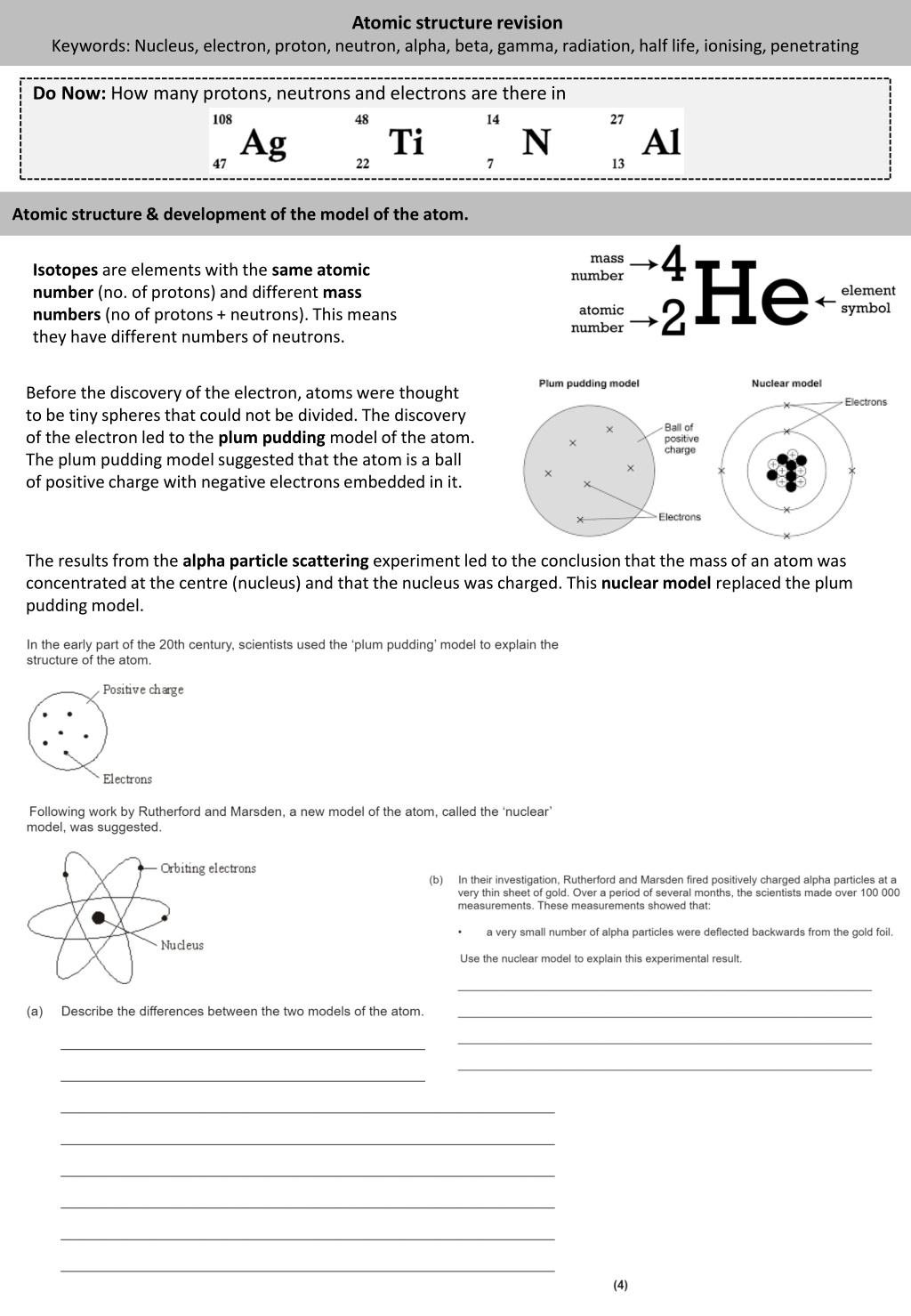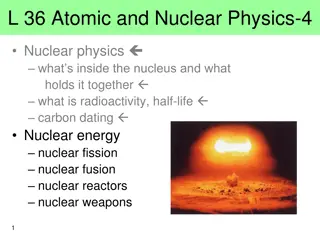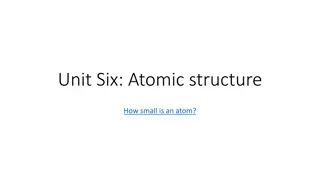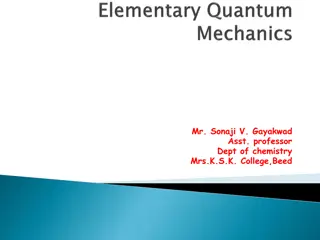Understanding Atomic Structure and Radiation Phenomena
Explore the development of the model of the atom, isotopes, types of radiation, half-life, and nuclear fission/fusion processes. Learn about the structure of the nucleus, behavior of alpha, beta, and gamma radiation, and the implications of radioactivity on health and energy production. Discover how nuclear reactions impact our world and the fundamental principles governing atomic interactions.
Download Presentation

Please find below an Image/Link to download the presentation.
The content on the website is provided AS IS for your information and personal use only. It may not be sold, licensed, or shared on other websites without obtaining consent from the author. Download presentation by click this link. If you encounter any issues during the download, it is possible that the publisher has removed the file from their server.
E N D
Presentation Transcript
Atomic structure revision Keywords: Nucleus, electron, proton, neutron, alpha, beta, gamma, radiation, half life, ionising, penetrating Do Now: How many protons, neutrons and electrons are there in Atomic structure & development of the model of the atom. Isotopes are elements with the same atomic number (no. of protons) and different mass numbers (no of protons + neutrons). This means they have different numbers of neutrons. Before the discovery of the electron, atoms were thought to be tiny spheres that could not be divided. The discovery of the electron led to the plum pudding model of the atom. The plum pudding model suggested that the atom is a ball of positive charge with negative electrons embedded in it. The results from the alpha particle scattering experiment led to the conclusion that the mass of an atom was concentrated at the centre (nucleus) and that the nucleus was charged. This nuclear model replaced the plum pudding model.
Types of radiation Alpha particles are the most massive (as they are made of 2 protons and 2 neutrons) and so they bump into other matter more often. When they do this they ionise matter (making it lose an electron). Alpha radiation is the most ionising but the least penetrating (it can be stopped by paper). Gamma radiation is the least ionising but the most penetrating (taking thick lead to stop it). When a nucleus decays, the mass number, atomic number and charge is conserved. When alpha/beta decay happens, the nucleus transmutes into another element. When gamma decay happens the nucleus emits some energy but keeps the same atomic and mass numbers. Alpha decay example: 241?? 237?? + 2 4? 95 93 Beta decay example: 14? 14? + 1 0? 6 7
Half life Half-life is the time taken for the count rate (measured in Becquerel) to halve. We can calculate this using the tree method or from a graph. Radioactivity is dangerous because our cells can be ionised. This can kill cells or lead to mutations and potentially cancer. If some radioactive particles are in contact with an object, we say the object is contaminated. All types of radiation are dangerous but alpha particles are most dangerous inside the body as they are most ionisingand can t escape the body. Beta particles are dangerous up to the mid-range and gamma radiation is dangerous up to the long-range.
Nuclear fission & fusion The energy released in nuclear power plants comes from nuclear fission. Large, unstable nuclei such as uranium-235 or plutonium-239 break into smaller fragments, releasing energy as they do so: 235U + neutron fission fragments + neutrons + energy When a uranium-235 nucleus undergoes induced fission after collision with a neutron, it breaks up into two smaller nuclei and two/three neutrons. These are called fission neutrons. The fission neutrons can go on to cause further fission events, which will produce further neutrons, and so on, causing a chain reaction. A nuclear reactor uses a controlled chain reaction to produce heat to produce steam for a generator. Apart from the source of heat, it works in the same way as a coal-fired power station. The reactor itself consists of fuel rods, control rods, coolant and a moderator. Uncontrolled chain reactions are used in atomic bombs. Whereas nuclear fission involves very large nuclei splitting into smaller nuclei, fusion involves small nuclei joining together to form larger ones. The energy emitted by a star, such as the Sun, comes from nuclear fusion. In order for this to happen, the core temperature has to be extremely high in excess of 10 million degrees. Nuclear fusion in a star like the Sun involves the combination of lighter isotopes of hydrogen to form helium, and the release of energy.























